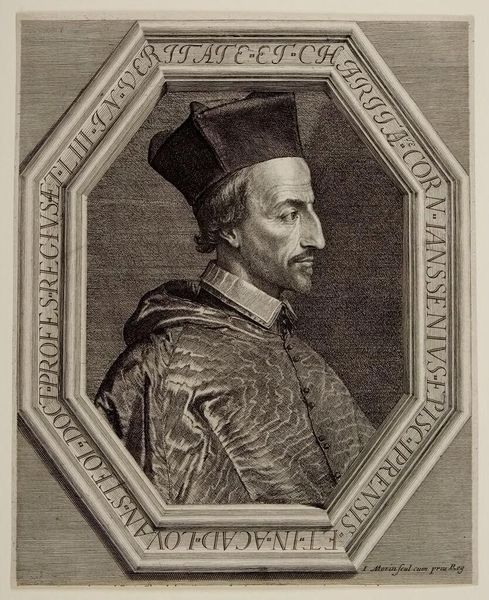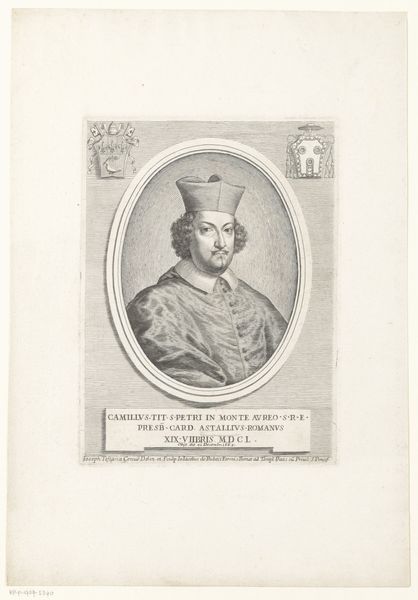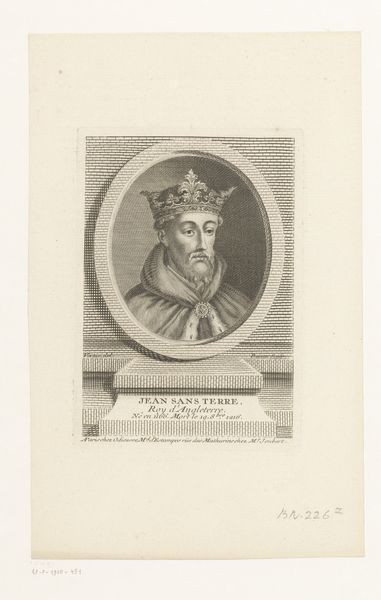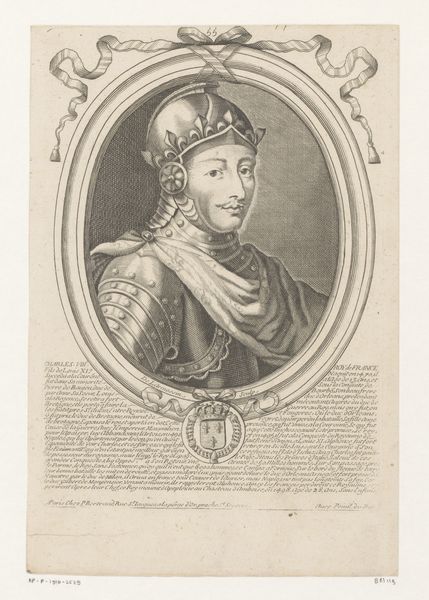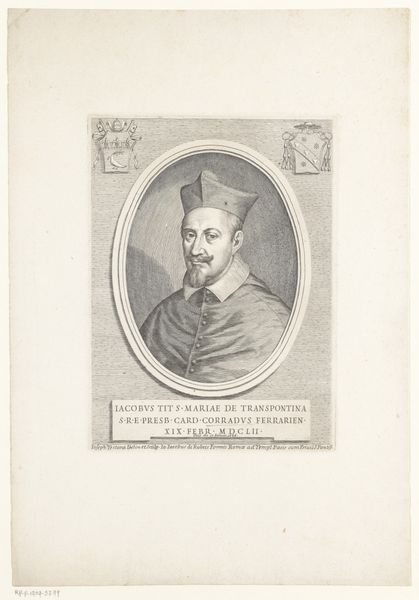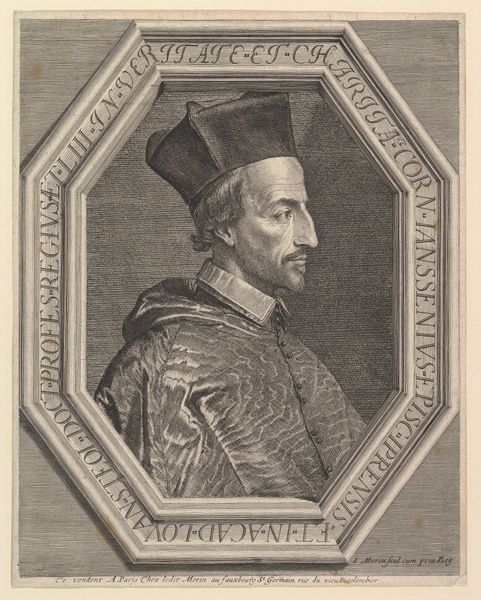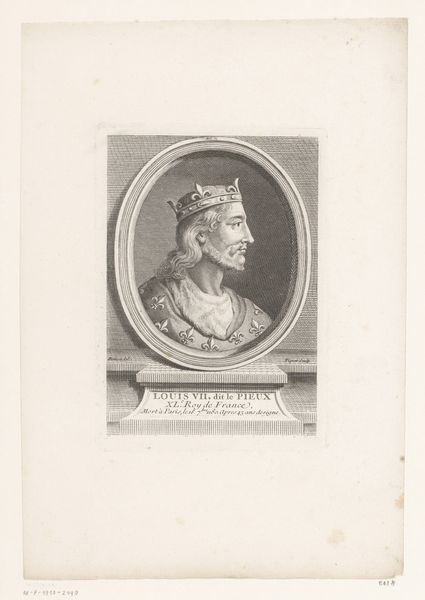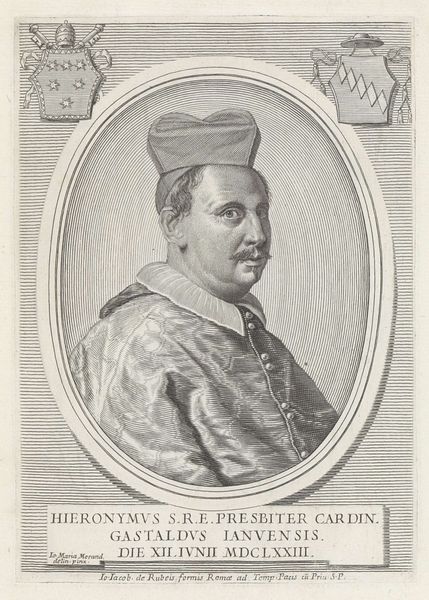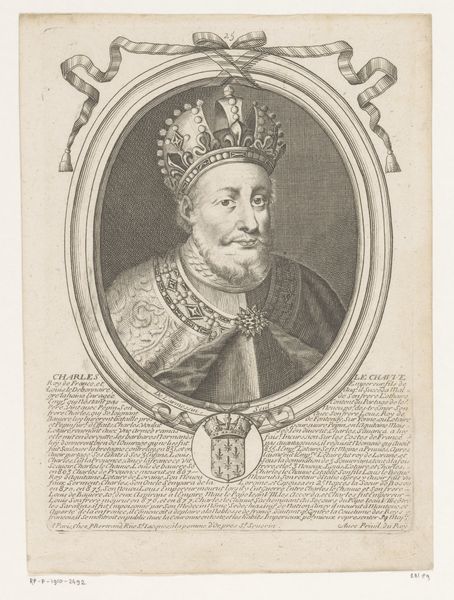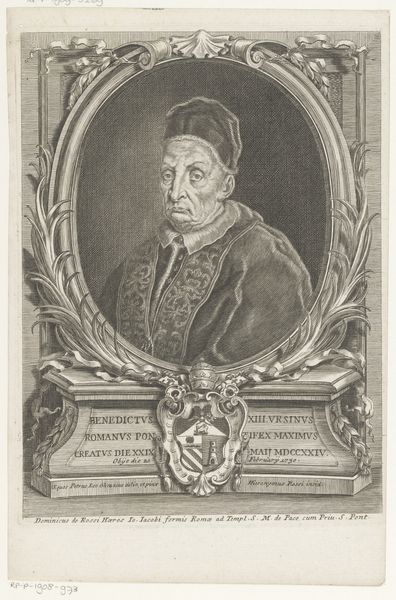
print, engraving
#
portrait
#
baroque
# print
#
caricature
#
engraving
#
portrait art
Dimensions: height 327 mm, width 227 mm
Copyright: Rijks Museum: Open Domain
Curator: Here at the Rijksmuseum, we have Cornelis Bloemaert's 1645 engraving, "Portret van kardinaal Francesco Peretti di Montalto," or, "Portrait of Cardinal Francesco Peretti di Montalto." Editor: It's interesting to see this portrait immortalized in print. The textures of his garments look smooth, yet I feel the linear quality flattens the image somewhat, but I wonder how was it even made. Curator: The baroque style here clearly aims for the lavish display of power and status typical for the period. Note how the oval frame itself seems to present the Cardinal as an object of reverence. Considering Bloemaert, while prolific, was essentially a commercial artist, engravings like this served a clear purpose. They distributed images of important figures, influencing public perception and solidifying their positions. Editor: The production aspect is very interesting. You can tell this engraving demanded considerable skill and time; each line carefully etched. But did Bloemaert profit fairly for the value added to his work? Furthermore, let's consider the materials: the copperplate, the paper, the ink. The engraving wasn't just about the image of a cardinal. It was a product, created and circulated within specific economic constraints. What about the cherubic figures, framing the inscription? Were those made at scale? Curator: Exactly. The placement of cherubs wasn’t just decorative either—the Church deployed its imagery as part of their propaganda apparatus. Also notice how Francesco Peretti, the sitter in question, was in fact the grand-nephew of Pope Sixtus the Fifth! Talk about politics and power being deeply embedded into social and familial structures... Editor: Absolutely. Looking closer, the print shows signs of wear, and use; you can almost imagine where it might have been held or displayed. That wear itself tells a material history, layering the original creation with stories of handling and interaction over time, making me wonder who looked at it, and touched it over the years. Curator: Yes! Thank you for underscoring how we as a society imbue and utilize those materials...It definitely broadens how to understand visual art in context and, more specifically, Baroque portraiture. Editor: I’ll be sure to look at material culture and history a bit more closely in the future too. It's really about who had access to artmaking materials in the 17th Century, right?
Comments
No comments
Be the first to comment and join the conversation on the ultimate creative platform.

